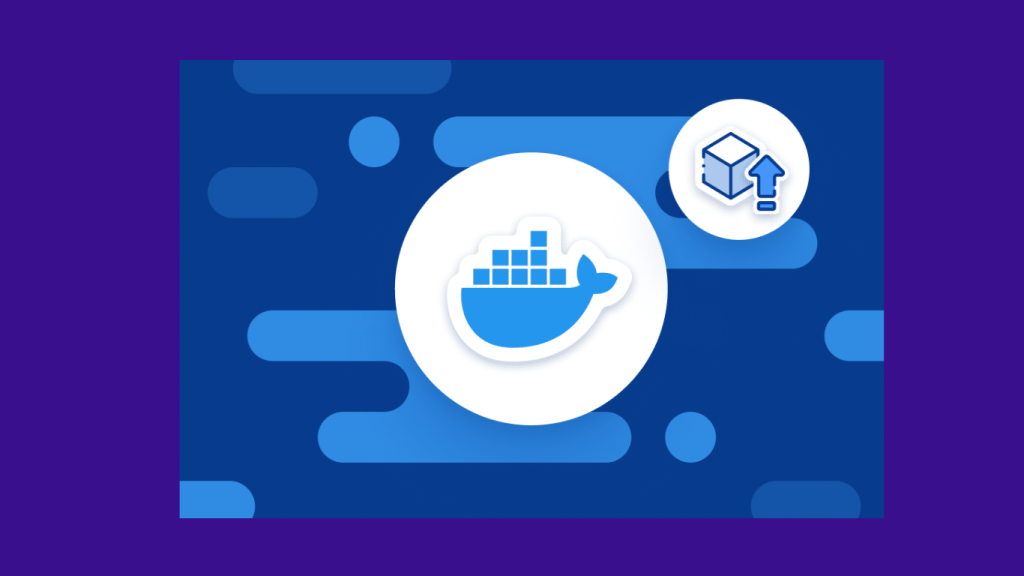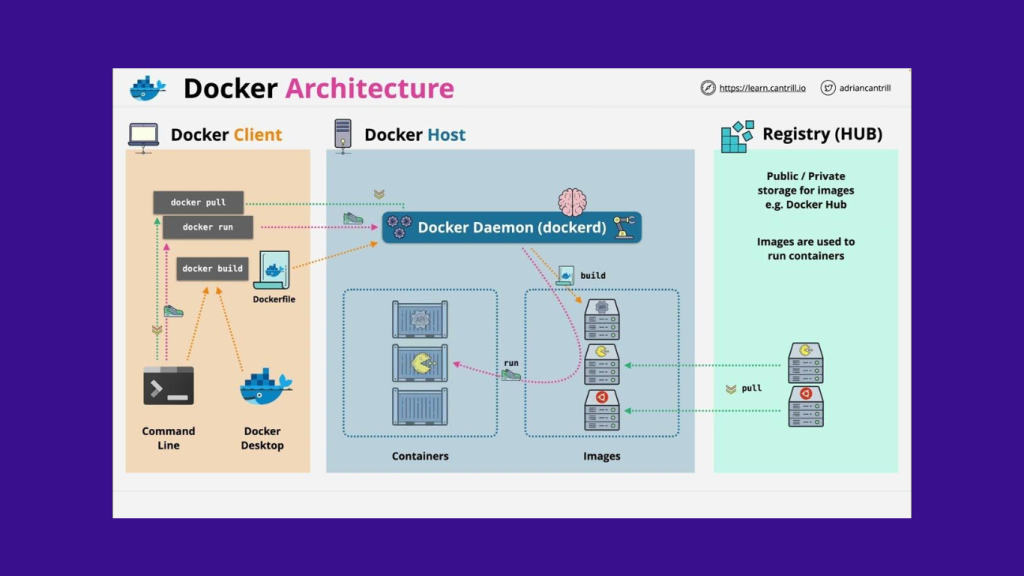Table of Contents
Docker, a powerful containerization tool, has changed how apps are built, deployed, and tested. It makes setting up and managing complex environments easier by separating applications and the libraries they need into self-contained containers.
When testing email servers, Docker is an open and effective option. Many types of testing require a reliable email server, such as unit and integration tests, speed benchmarks, and security audits. Docker provides a controlled setting to mimic real-life situations and find possible problems early in development.
This blog post will talk about six common problems that can happen when testing an email server and how Docker can help fix them:
It’s hard to set up and configure:
Taking care of dependencies:
Inconsistencies in the environment:
Problems with scalability:
Problems with security:
Testing cycles that take a lot of time:
By being aware of these issues and using Docker’s features, you can speed up the testing of your email servers and make sure that robust and dependable email solutions are sent.

6 Common Issues with Docker Email Servers for Testing and Fixes
Issue 1: Slow Startup Time
Problem
Many people have issues with slow startup times when testing email servers. This can slow testing because coders and testers have to wait for the server to start up before running tests fully.
Solutions
Optimize Docker Image Size
Minimal picture: To begin with, create a simple base picture showing the most critical parts of the email server.
Layer Optimization: Set up the Dockerfile with as few layers as possible, speeding up the build process.
Multiple-Stage Builds: Multiple-stage builds let you eliminate files and dependencies that aren’t needed from the final picture.
Use a Faster Storage Solution
SSD Storage: SSD storage is used on both the host machine and the system running containers. SSDs have much faster read and write speeds, which makes them faster to start up.
Container Storage Interface (CSI): Use CSI drivers to achieve the best storage speed and scalability for container workloads.
Leverage Caching Mechanisms
Docker Layer Caching: Docker stores layers during the build process, so they don’t have to be rebuilt as often in later builds.
Container Caching: To speed up startup times, you should use container caching methods to store and reuse container images.
Application-Level Caching: Add caching to the email server application to store data viewed often and reduce the number of database queries that need to be made.
By using these tips, you can reduce the time it takes for your email server to start up and make testing more efficient overall.
Issue 2: Configuration Errors
Problem
Tools for managing configurations, such as Ansible and Puppet, can be used to set up and deploy email servers. These tools help keep things consistent and reduce the chance of making mistakes.
Solutions
Use Configuration Management Tools
Ansible and Puppet: Use configuration management tools such as Ansible or Puppet to deploy and configure email servers. These tools help keep things consistent and reduce the chance of making mistakes.
Verify Configurations Against Best Practices
Regular Audits: Ensure that the settings on your email servers comply with industry norms and best practices for security.
Validation Tools: To ensure that configuration files are suitable and use correct syntax, use validation tools.
Use Pre-Configured Docker Images
Community Images: Use Docker images that are already set up and ready to use from reliable sources, like Docker Hub, to test email servers. These images usually come with security steps and configurations that work best.
Custom Images: Create custom Docker images with already-set-up settings to speed testing and lower the risk of configuration mistakes.
These options help you quickly eliminate configuration errors and ensure emails are delivered correctly in your testing environment.
Issue 3: Network Connectivity Issues

Problem:
Problems with the network connection, such as firewall restrictions, DNS resolution failures, or wrong network settings, can make sending and receiving emails and testing more difficult.
What to do:
Make sure the network settings are correct
Configuring DNS: Ensure that the DNS settings are set up correctly so that domain names can be resolved and mail servers can be found.
Firewall Rules: Ensure the firewall rules allow the network traffic needed for email exchange.
Network Ports: Make sure the email server’s ports are open and can be reached, like port 25 for SMTP.
Use tools for network troubleshooting.
Network Diagnostics: Use network diagnostic tools such as ping, traceroute, and telnet to find and fix problems with network connections.
Packet Capture: Using tools that capture packets to look at network data and find specific problems.
Look at the firewall rules.
Firewall Configuration: Check the firewall settings to ensure they let email server data in and out.
Allow listing: To circumvent firewall rules, you might want to add IP addresses or sites connected to the email server to a “whitelist.”
Fixing these network connection problems will ensure that email communication works well and prevent your testing from being interrupted.
Issue 4: Email Delivery Failures
Problem
Email delivery problems are among the most annoying aspects of testing email servers. Emails might not reach the right people for several reasons, including wrong DNS settings, login issues, or server-side problems.
What to do
Check the DNS settings.
MX Records: Ensure that the MX records are set up properly so incoming mail goes to the correct mail server.
SPF and DKIM Records: Use SPF and DKIM records to show who the sender is and make it easier for emails to get delivered.
Look at the email server logs.
Messages of Error: Look through the email server logs to find messages of error and fix specific problems.
Delivery state Notifications (DSNs): Look at DSNs to learn more about the delivery state of specific emails.
Use tools to test emails.
Email Delivery Testing Tools: Use testing tools to make it look like emails are being sent and find problems that might be happening.
Email Validation Tools: Always use email validation tools to ensure that email addresses are correct and lower the chance that messages will not be delivered.
Taking care of these possible reasons why emails don’t get delivered can make your email server more reliable and effective, and it will also make sure that your test emails get to the right people.
This video owner : Fireship
Issue 5: Security Vulnerabilities
Problem
Email systems with unpatched security holes can pose significant security risks, making them appealing targets for hackers. Taking advantage of these flaws can lead to data breaches, illegal access, and other problems.
How to Do It
Docker images and software should always be up to date:
Updates Often: Regularly updating Docker images and the email server’s base software is the best way to fix security holes quickly.
Regular Updates: Set up regular update systems to simplify the process and reduce downtime.
Strong passwords and encryption should be used:
Rules for passwords: Strong passwords should be followed, such as using long, complicated passwords and changing them often.
Encryption: Encrypt private information like passwords and configuration files to keep it safe from people who shouldn’t have access to it.
Follow the best practices for security:
Input Validation: Input validation can prevent attacks like SQL injection and cross-site scripting (XSS).
Secure Coding: To keep the risk of adding vulnerabilities as low as possible, follow secure coding practices.
Network Security: Set up firewalls and other controls on network access to prevent people who aren’t supposed to be there from accessing the email system.
Regular Security Checks: To find and fix possible security holes, you should do regular security checks.
Suppose you put security first and follow these best practices. In that case, you can protect your email server from attackers and significantly lower the chance of security breaches.
Issue 6: Resource Constraints
Problem
Adding more resources, like CPU and memory, can significantly slow down an email server. Not having enough resources can cause response times, email delivery delays, and website crashes.
What to do:
Give the computer enough CPU and memory:
Allocating Resources: Ensure you have enough CPU and memory to handle the needed work.
Watch How Resources Are Used: Monitor resource use to identify bottlenecks and change resource distribution.
Improve how resources are used:
Efficient Configuration: Set up the email server to use resources efficiently and have as little extra work as possible.
Caching Mechanisms: To make the computer less busy and speed things up, use caching mechanisms.
Load balancing: Spread the work across several computers to make the system more scalable and faster.
Think about cloud-based solutions:
Elastic Scaling: Use cloud-based services to change the size of your resources based on how much you need them.
Managed Services: Use managed email services that manage your systems and resources.
By carefully considering its resource needs and using optimization methods, you can ensure your email server has the resources to work quickly and reliably.
Conclusion
We looked at 6 common problems that can come up when checking an email server in this blog post:
Slow Startup Time: This can make tests less efficient and less productive.
Configuration errors: If you don’t set up something correctly, it can stop emails from getting delivered and leave your security open to attack.
Problems with Network Connectivity: Issues with the network can make it hard to send emails and test software.
Email Delivery Failures: DNS settings, authentication, or server-side setups can go wrong and prevent emails from reaching the right people.
Security Vulnerabilities: Vulnerabilities that haven’t been fixed can make the email server and private data less safe.
Limitations on Resources: Insufficient resources can make the email service less reliable and ineffective.
Addressing these problems before they occur can make your email server testing process much more efficient and reliable. Docker is a powerful tool that can help with these problems and create a strong testing environment because it can containerize applications.
Please tell me about your experiences testing email servers and any other tips or tricks you may have. You can ask questions in the area below the post.
FAQs
Q: What is Docker, and how does it help with email server testing?
A: Docker is a tool for putting apps inside containers. It lets you package your email server and all the necessary software into a single unit. This makes it easier to set up, configure, and test and ensures everything is the same in all settings.
Q: Can I use Docker for production email servers?
A: Yes, Docker can be used for email systems that are used by real people. However, protection, scalability, and high availability should be carefully considered. Talking to experienced DevOps experts is suggested to ensure that deployment and management are done correctly.
Q: How can I optimize Docker image size for faster startup times?
A: To get the best Docker image size, you can:
- Use a simple background picture.
- Cut down on the number of layers in the Dockerfile.
- Use multi-stage builds to get rid of files that aren’t needed.
Q: What are some best practices for configuring email servers to avoid delivery failures?
A: Some of the best methods are:
- Also, check the DNS settings, mainly the MX, SPF, and DKIM records.
- Setting up the proper authentication methods.
- Checking the email server logs for problem messages regularly.
- Using email testing tools to make it look like the email was delivered and find problems.
Q: How can I ensure the security of my Dockerized email server?
A: To make things safer:
- Software and Docker files should always be up to date.
- Encrypt your files and use strong passwords.
- Use the best security techniques, such as safely validating input and writing code.
- Scan for weaknesses often and apply patches.
Q: What are some resource optimization techniques for email servers?
A: Some methods for optimizing resources are:
- Giving the computer enough memory and CPU power.
- Using configuration choices that work well.
- Using caching to lower the load on the computer.
- Consider elastic scaling options that run in the cloud.